My roommate bought a new truck to help us in our move, and we took it to our mechanic’s shop to trouble shoot a probable vacuum leak. Upon arrival I couldn’t help but spot this classic old American truck getting some finishing touches. The sheer openness of the engine bay stood in stark contrast to his Japanese rig.
Not only does this Chevy six have 50% more cylinders than Jerry’s Nissan, but the amount of wiggle room around it is exponentially higher. To wit:
Along the troubleshooting way we took the cap and rotor off for an exam (which we subsequently replaced). The view of the cap:
I had mostly forgotten about the 10-plug cap on these Nissan Z24 rigs, compared to the four on the Toyotas I am so familiar with. Getting the order correct on any cap is always paramount, and even more difficult when you have so many leads to connect. On the converse:
In any event, you could rent a room in the available space around the cap on this rig, non-smoking recommended. I marveled at the simplicity of the old truck compared to the slightly less old Japanese pickup, and thought back to the dozens of cars and trucks and vans I have owned regarding the ease or difficulty of doing DIY repairs. Re-brushing the alternator on my 87 Integra involved removing the driver’s side wheel and cv axle, whereas I replaced the alternator on my 84 Camry (the first time I had ever done such) in about ten minutes.
So I’d like to hear from the CC Commentariat: what are you most memorable DIY dreams and nightmares?







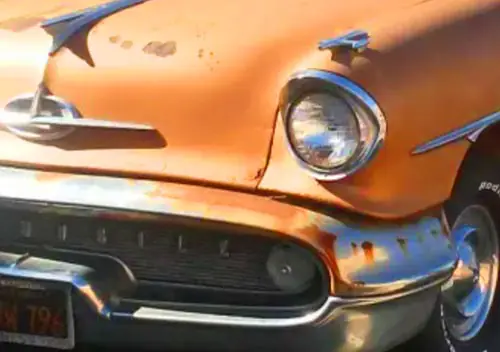
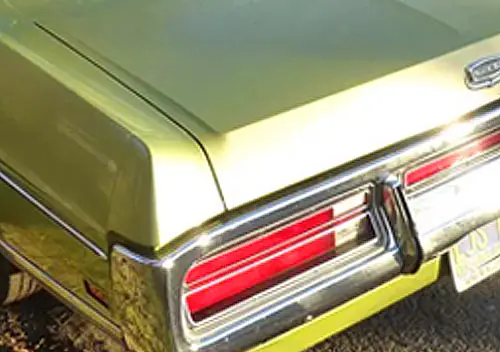



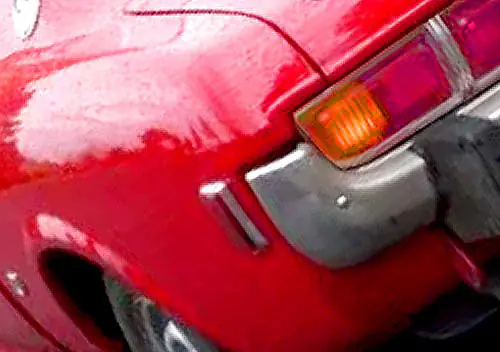
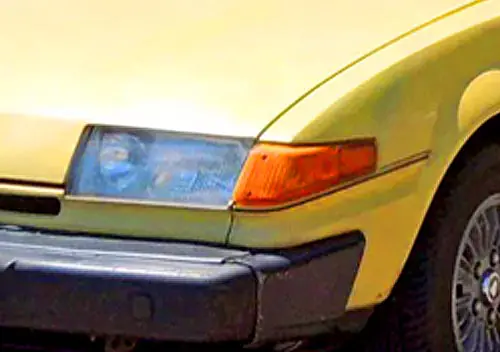

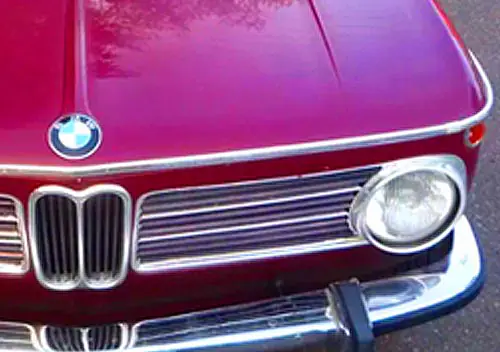
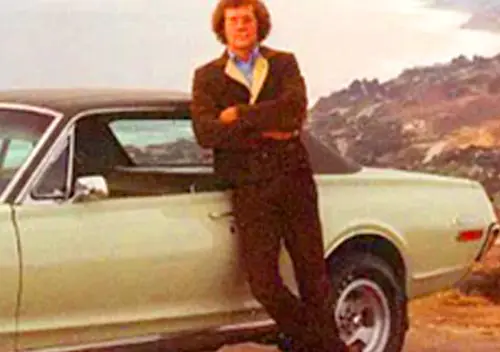

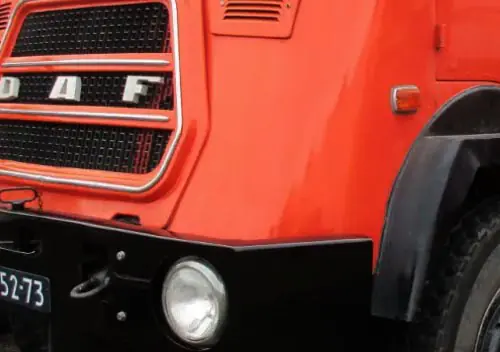
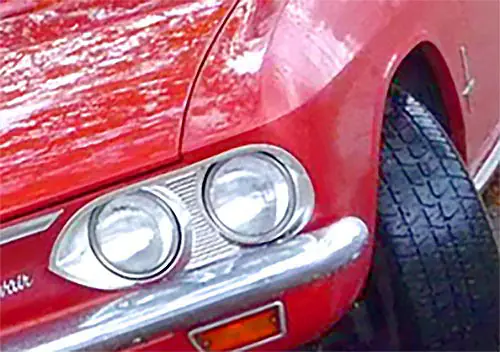
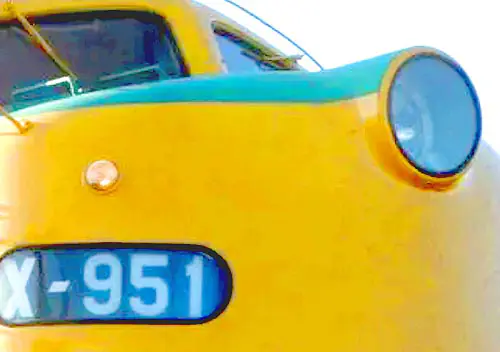

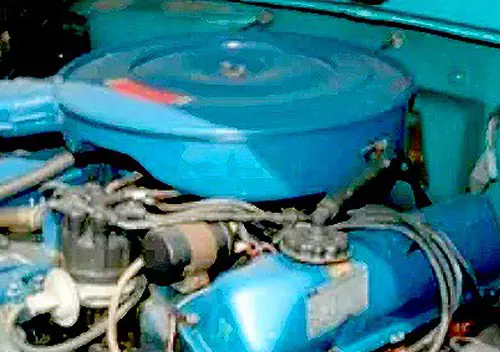
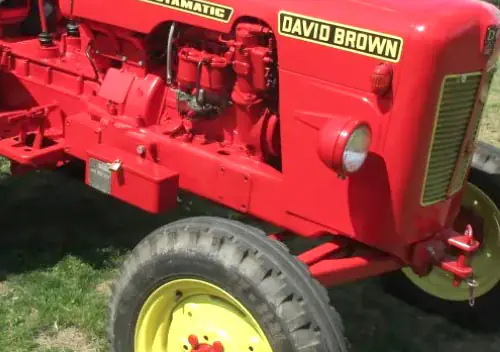
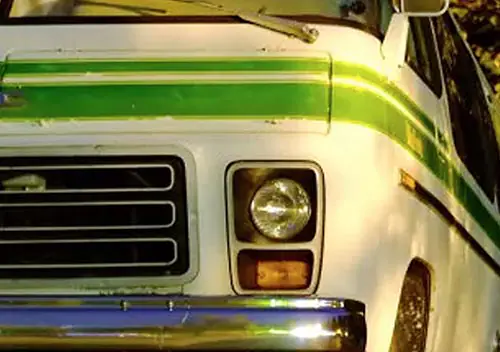

Hardest? Well, your think that when opening the hood and staring at an American V-8 in a car that will be 50 years old on November 25th, working on the car would be easy, but there is amazingly little unused room in underhood in my Sunbeam Tiger. Plenty of opportunities to scrape your knuckles everywhere you look.
That’s what happens when you shoehorn a V8 with 3x the displacement into an engine compartment designed to house an inline-4. 🙂
I had several of the NapZ vehicles. IIRC it was the passenger side rear plug that the tuneup places conveniently “forgot” to change. I learned to look before it left the shop. I also owned some old chevs. Looks like a 230/250 there. The most difficult thing was the rear mounted distributor and that hardly qualifies.
Both would run long past the time when you grew tired of them.
Easiest 78 ford ltd. Hardest but not hard 88 lincoln town car. Worst I e er worked on some saab
Ironically both were A-body GM for me.
Chevrolet Celebrity Iron Duke, piece of cake. You could see the driveway around the engine. Lots of room. Which was good because it needed frequent attention mostly belts and hoses and brake lines.
Hardest? 1994 Cutlass Ciera that belonged to my first wife. V6 seemed like it was jammed in there compared to the Iron Duke. Couldn’t even do an oil change without getting it all over the half shafts and front suspension.
Let me guess, 3.1 V6 right? Those were a pain
I concur on the “piece of cake” Celebrity Iron Duke response, EXCEPT for the one bolt to the power steering pump bracket that was near impossible to reach and torque.
The serpentine belt was remarkably open for access, all the hoses too. Never had any problems with the belts, hoses and brake lines, nor with the single venturi throttle body.
Mine was a first year of production when the Iron Duke still had separate belts for everything, no serpentine system. It was weird to have a power steering belt fly off and keep your alternator going, or to have your alternator belt break and keep power steering. The brake lines were just rotted out from years of neglect.
Easiest would have to be the 1929 Ford Model A. Everything was just right out there. The car even had enough ground clearance that I could shinny underneath without jacks or ramps.
If we move up to more modern stuff, it would be the 71 Scamp. I did a lot of wrenching on that one in my college years but everything was easy to get to and pretty straightforward. Especially after I learned how to gap the points by yanking the whole distributor out of the car and clamping it in my bench vise.
Hardest was probably my 99 Town & Country. When it came time to replace plugs and wires, the forums were split on whether to concoct an odd set of extensions and universal joints or whether to remove the cowl panel that contains the wiper hardware. I gave up and took it to the mechanic. He made me a deal that he would do the front 3 for free because of how much he would have to charge to do the back 3.
I continue to maintain that for all of the energy consumed and pollution caused by the manufacture of the bazillion sensors, transducers, vacuum diaphragms, vacuum lines, wires, harnesses, and everything else, there is probably a zero net gain in either energy savings or pollution reduction. The only reason the sky is clearer is that nobody burns coal to heat their houses any more. And this is my grumpy old guy rant for the day.
An ultimately clean efficient gas car is the current Prius. It’s simple under the hood. No belts except timing, no distributor (coils on plugs). Just some cooling hoses. A modest number of wires to the computers that do it all. Nothing to maintain either besides oil. Belt and plugs at 100K.
Many new conventional engines are almost as simple. CCs are the nightmare cars.
“Simple under the hood” unless it has to be taken in for software downloads.
I sorta kinda agree with this. Our Gen2 Prius is one of the easiest cars to do regular maintenance on that I’ve owned (and I’ve now done 17 oil changes since new). Easy to reach oil drain plug and filter, air and cabin filters are trivial to change. Same with our previous ’93 Corolla. Some older RWD pushrod/non-crossflow 4 cylinder cars I’ve owned certainly had more open and accessible engine bays, but usually had a few very difficult to reach spots, random sized nuts and bolts, fewer captive nuts so you had to put a wrench on both ends, etc. I think design-for-serviceability on modern cars often balances out the increased complexity and density. So it’s usually a tradeoff.
Ditto on the 3.3L Gen 3 Caravan/T&C. I paid someone else to do ours. Our Gen 4 (3.8L) was a piece of cake, though – 20 minutes and done.
“I continue to maintain that for all of the energy consumed and pollution caused by the manufacture of the bazillion sensors, transducers, vacuum diaphragms, vacuum lines, wires, harnesses, and everything else, there is probably a zero net gain in either energy savings or pollution reduction”
I concur, heartily. I also am fairly certain that buying a new “green” car creates more pollution than driving an older car. “Cash for Clunkers” was an absolute abomination!
Easiest Vauxhall Cresta a 3.3 straight 6(don’t mix the leads up though!).Lots of space to get to things.
Hardest due to lack of space was little sister’s Wolsley Hornet,a Mini relation.
Easiest? 66 Plymouth Belvedere with a 318. Plenty of room all around the engine. No web of vacuum hoses. Didn’t even have power brakes.
Worst? Probably the new Jetta. A lot of companies are putting a big plastic covers over the engine. Why not just stick a label on it like we see on electronics “no user serviceable parts inside”?
Easiest: Mazda 323, 5pseed, no A/C. It hardly needed any work at all.
Hardest: Ford Aerostar, 4L. $180 to change spark plugs. Even the mechanic was happy when I replaced it.
I hate engine covers. You can’t see anything and they must make it run hotter. If I ever have a car with them they are going in the trash.
+1 Engine covers hide problems. When I open the hood, I want to be able to see that I have a leaking valve cover gasket or heater hose, etc etc. so I can fix it before it becomes serious.
I’ve heard in the latest generation of BMWs removing the cover will cause the “check engine light” to come on.
I have noticed with online auctions that most fleet vehicles have had their covers thrown away – presumably so mechanics can see the engine better and so they don’t have to take it on and off over and over.
Wait, but don’t you have to remove the cover to, you know, *check* the engine?
Miatas are famously easy to work on. My ’93’s clutch slave cylinder went out. Just removed the right front wheel and there it was. Easy as pie.
Given that my ’66 F100 six is essentially the same as that Chevy six truck, it wins hands down.
I’ll agree, even my later 1978 F100 with a/c on the 300-6 is remarkably simple and easy to work on from either end, hell I can change the oil without even having to jack the car up, and its “Miller Lite Tallboy” sized oil filter gives me a perverse sense of satisfaction.
“Miller Lite Tallboy”
NOW you’re talking. I hope you mean having one while working on the car, too! Makes things complete.
Hardest ; 1985 Honda Civic CVCC California Emissions with the 20,000 vacuum lines, solenoids, diaphragms feedback carburetor and going everywhere under the hood. I was Working on my future career but working on that car in 1990 made me switch my future from automotive technician to something else.
My eyes are crossing…..wasn’t Hondas tag line during this time “We make it simple”?
My god Sir! Yes! That’s the thing! It is a series of tubes, isn’t it? 🙂 albeit, a really ugly series of tubes.
This looks like a National Lampoon parody on Auto Repair Made Easy.
Step 1: Open hood
Step 2: Cry
Are you sure that’s not an early diagram of the internet?
Ted Stevens thought so.
Just a few screws or even pencils to plug the correct hoses and take off the rest and voila… No more problems!!! Or at least something similar had been done to the 1985 Covic that my wife had when I met her 15 years ago. :oD
This reminds me of spaghetti marinara.
The Mazda RX 7 has something called the bird’s nest.
This is such a timely post for me, because I just finished changing the high-pressure power steering hose on my ’01 PT Cruiser.
I have been wrenching on cars since before I could drive, and have owned a LOT of cars on which I have done every kind of work there is to do. That said, this was the absolute worst job I have ever done on any car. Anything that has to be done to the front of the engine (passenger side) can only be done by an anorexic contortionist. You can work from the top or the wheel well, which leaves about a foot of vertical space that is literally untouchable. Guess where the power steering pump is?
Typical work (suspension, brakes) is no more difficult than anything else, but the engine…you have to split the intake manifold to change plugs or replace a thermostat.
Rant over; at 130K+ miles, it has really been virtually trouble free.
Easiest is my Triumph Spitfire. The clam shell hood allows you to get at anything with ease. I just adjusted the valves in about 10 minutes. Nice. Second place would be the ’68 Falcon I briefly owned. Same as the above pickup with big engine bay and skinny inline six motor.
Hardiest would be Nissan Quest minivan for engine access. Fwd, DOHC V6 and short hood conspire to make it tough to see never mind access components. Those back 3 spark plugs take 10x (at least) as long as the front 3.
I agree – nothing beats a Spitfire for easy access to the engine. Rest of the car is simple to work on as well. Miatas are a close second.
Hardest job ever was removing the starter from a 1967 Series 2a Land Rover 109. This was a one year only model in North America with a downsized 6 cylinder engine from Rover passenger cars. When they did the swap to left hand steering, they neglected to leave space to get the starter out without the dis-assembly of most of the front suspension. I did the job outside on a gravel driveway – my friend Bill and I have mild PTSD from the experience. It’s a wonder he still speaks to me…
Hmm, easiest is my 63 VW. Not that everything is totally accessible (like adjusting the valves is a bit of a PITA) but because my particular VW is an unrusted Texas car everything comes apart so easily. Put on wrench, turn bolt.
Hardest was our 89 Mercury Topaz. It was clearly engineered to go together, not to come apart. Lots of stuff had corroded into lumps, snapped bolts, clips and plugs that broke when you tried to take it apart. Nothing too challenging, but a consistently annoying car to work on.
“… engineered to go together, not to come apart.”
Just love that line!
52 Ford truck, it even has enough ground clearance to slide underneath to replace the starter without jacks. Its even better when you remove the hood, as the old style hinges don’t give you much room.
The 83 Toyota truck had to be the worse, but that was only because of the complexity of the carb and vacuum lines, otherwise it had enought room.
Hardest one I hope to not have to work on. 2005 Pontiac Boneville GXP which has a Northstar V8 wedged sideways under the hood. Love the car, hope the low-mileage Northstar keeps behaving.
Easy was my 65 Plymouth Fury III with a 318. Even with. The eight in there there was plenty of room to work.
They were both Ford with sixes. Easiest? ’68 Mustang with a straight six. I was only restricted in working on something by my ability to lift it in and out from under the hood. Hardest? ’07 Ford 500. Couldn’t even shimmy under there (despite turning the wheels all the way to the right to try and scoot past the undercladding) to get to the oil filter.
Easiest, I have to say my 67 Riviera, or maybe some B/C-body from 77->.
Hardest? Chevrolet Blazer S-10 with the 4,3 V6, and a bunch of European cars. The worst may be some VW and Audies, from around modelyear 1999/2000 and up. Especially if it have a V6 og V8 engine.
I second the 4.3 S-10 Blazer – it’s a wonderful engine, but quite pesky to work around.
The worst may be some VW and Audies, from around modelyear 1999/2000 and up.
For instance, I can see the water pump on my 5 cylinder Jetta, and put my fingers on it. To get it out of there? Place jacks under engine and trans, loosen engine and trans mounts, jack up engine and lower trans to cant the engine far enough so the pump clears the wheelwell when you pull it out.
The Jetta also has an engine driven vacuum pump to run the brakes. The pump tends to leak oil. After you take all the covers off, and take the battery out, you loosen and back off the transmission.
Changing the timing chain on the 5 cylinder requires transmission removal. Fortunately, the chain seems to have been revised enough so it’s doesn’t wear out in 70K miles like it did when the engine first came out.
‘course the water pump in my Ford Taurus X was in the valley between the cylinders and ran off the timing chain. About $1,000 in engine dissasembly and reassembly to get that beast replaced.
I have been paranoid about coolant hoses since the 70s. when I had two different Fords blow their upper radiator hoses at 5 years. I changed all the hoses in my 85 GLC in the apartment parking lot…that car had no A/C, no power steering and the 85s had an exceptionally clean exhaust air injection system, no v belt driven pump, valves or snakepit of hoses. I was able to get at about half of the hoses in my 98 Civic (no A/C), left the rest to the dealer. The VeeDub? Forget about it.
Sounds like you all ready changed the vac pump but, next time: remove the shift cable and range switch, then remove and install the vac pump in pieces. Can be done in about an hour that way.
Sounds like you all ready changed the vac pump
Actually, my Jetta is new. Just turned over 600 miles yesterday.
I researched what problems it was prone to before buying. I had heard about the timing chain issue on the 5 years ago, but that seems to have been fixed by 08.
I checked out the water pump after learning about what a monster the pump was in my Taurus X.
The vacuum pump was a surprise. Was sniffing around a used Golf for a beater and noticed a signifcant amount of oil leakage. Web search for VW oil leak pulled up the vacuum pump. Debates rage on VWVortex whether to remove and install the pump in pieces as you suggest, or whether you can do it by just loosening the trans, or whether the trans has to come out. Seems the automatic is a lot worse than the manual trans…oh joy…my Jetta has a slushbox.
For what ever it is worth, I have done several with the disassembly method and so far no problems (all with automatics). I suppose you can probably guess what I do for a living.
Aaahh, coolant hoses. Two cars I’ve owned (the only straight-sixes, coincidence? maybe not) had tiny little heater hose sections tucked under/behind the cylinder head. Impossible to reach and totally neglected by the PO’s. One was an early ’80’s BMW 528i, the other was a DOHC 1FZE Toyota Land Cruiser. The latter’s hose now has its own TLA, PHH for “Pesky Heater Hose”. There is much internet space devoted to access for R&R and one enterprising vendor offers a long-life silicon replacement.
My wife’s old ’98 Ford Contour V6 was a nightmare. She was driving this rig when I met her. The water pump and alternator both went at the same time. I remember having to put the car on jack stands and take the passenger wheel off to even look at the thing. I remember having to buy new ratchets and socket extentions and still having a miserable time just getting at the bolts. Of course it didn’t help that I was working in the parking lot of our apartment complex in the blazing July sun in Gainesville either. The easiest? My ’88 Volvo 240 DL wagon, while no blueflame six, seemed designed to work on and fix easily. This is probably why I see old 240’s on the street after 25-30 years of service and haven’t seen a running Contour in months.
Easiest: ’50 Ford 8N, ’69 F-100, ’71 Vega (pre-V6 swap) and all my air-cooled VWs. The truck and Vega both had room for a Barcolounger under the hood, and the VW ‘upright’ engine is pretty darned simple – the monthly tuneup (including valve adjustment) took all of 20 minutes. Oh, and I’d add our ’90 Honda Civic three-door to that list as well.
Hardest: My wife’s (then girlfriend) mid-’70s Buick Century (grimy, hard to get at anything), 00′ VW New Beetle TDI (the shape begets poor component packaging), and my ’95 F-150 4×4 (it took months before I could go underneath without getting double eyefuls of rust flakes).
I don’t have much experience, pretty much the only real work I’ve done has been on GMs from the ’90s. It seems to me that transverse mounted V6s are a pain to work on in general, though. That rear cylinder bank is invariably shoved up against the firewall and pretty much inaccessible. On my ’98 Grand Prix, you had to undo the upper motor mounts and roll the engine forward to get at the rear plugs. Even then, I had to climb up on the radiator support with my ass in the air, and still work half by feel. I can’t say I really miss those days.
At a glance, it would seem like there’s plenty of room to work on the 327 in my ’64 Impala, but from my experience, wherever you need to put a wrench always seems to be a diabolically small space.
My ’91 Cadillac DeVille was actually pretty accessible, despite the sideways 4.9, but it helped that most of things I worked on were up top like the distributor, idle control module, throttle body and PCV valve.
When I traded the DeVille for the ’01 Seville, I opened the hood, took one look at that shoehorned Northstar and shook my head no. And you can barely see the 3.6 in my 2010 CTS under all those plastic covers. I’ve checked the oil, but that’s about it.
I’m about as good a mechanic as Elmer Fudd is a hunter, having managed to botch a simple alternator swap on the Impala. So I generally avoid working on it. Fortunately, the engine has been utterly reliable since the rebuild in 2000.
Easiest? That’s easy. 1967 Pontiac Strato Chief (Canadian version, so basically a Chevrolet Biscayne) with the 250 six and 3 on the tree. About as simple a machine as one could ask for.
Easiest: ’95 Nissan Pathfinder, possibly because nothing ever went wrong. It’s at just the right height to work on it easily from top or bottom. (NOTE: I did not ever fix the broken exhaust manifold studs, which is a reviled task).
Hardest: Oldsmobile Alero: just a knuckle-busting pain to deal with at every level.
I had a lot of under-hood time on my wife’s (then girlfriend/fiancee’s) ’00 Alero (a 150K+ mile Alero will demand such things). Certain things were a pain but it wasn’t all that bad. Maybe it’s because I was dealing with the old 2.4 I4 (a direct descendant of the “Quad 4”) rather than the V6 or the later model years’ Ecotec 2.0 I4.
In my limited experience overall, easiest to work on was my ’82 Malibu with the 3.8 V6. Plenty of extra room under the hood, everything was easy to get to. Vacuum lines were a bit of an annoyance but not all that bad. The fact that the bottom driver’s side was covered in oil from a leaking head gasket made a plug wire change difficult but that wasn’t the design’s fault.
Hardest was probably my ’96 Lincoln Mark VIII. The InTech 32V V8 is a *wide* engine with some packaging oddities even in a correspondingly large car. It was nearly impossible to reach the oil filter to get a wrench or hand on it, and once you did, getting it out around the various suspension and accessory components in the way invariably cause you to dump out all the oil inside all over said suspension components. A wise man on a forum once quipped “Who designed this filter location — the Marquis de Sade?” Replacing a door handle was somehow a two-man job. The routing of the plug wires was positively diabolical. And the air suspension, while a beautiful thing when working, wasn’t really user-friendly to work on (though thankfully I never had to). Loved the car, but my repair experiences were quite annoying.
”
Hardest: Oldsmobile Alero: just a knuckle-busting pain to deal with at every level.”
I’m with you, brother.
Who’s bright idea was it to put the clutch slave cylinder INSIDE the bell housing, so you have to pull the tranny to replace it?
’67-’72 Chevy pickups…the top shot is a dead giveaway…even with a V-8 they’re easy.
In 1996 I swapped a 350 TPI into our family wagon, an ’89 Caprice. It was ENGINEERED to be as easy to work on as possible, i.e, smog pump/plumbing went in the trash, fuel filter went on the fenderwell, etc. It became one of the easier vehicles to work on.
The ’91 Caprice I owned a few years ago gets the crown for easiest to work on. I could do cap/rotor/plugs/wires in a little over an hour. It trumps the ’54 Chevy I once had if only because the ’91 didn’t have points…and I never really did master things like dwell…I’d advance the distributor until just before it would backfire, then back off.
My 1971 Gremlin was also pretty easy to work on.
Worst? Far and away, the ’93 Taurus SHO we bought for my son’s 16th birthday. I could write an entire book…from voodoo “breakout boxes” to diagnose electrical issues to crucial fittings almost impossible to access. “Not user friendly” doesn’t begin to describe it. My ’97 Blazer’s a joy to work on by comparison…even though you’re going thru the fenderwell and standing on your head to access the plugs…
Chas,
When you rotated the distributor you were advancing/retarding the timing, not fooling with the dwell. Dwell is set with a feeler gauge. An older and wiser friend showed me how to clean the points and adjust the dwell on my mother’s ’64 Falcon six after I had conducted a top speed trial. I had burnt the points. A little filing, a bit of adjusting, and the thing ran like new. I felt like such a stud.
I was pawing through a garage cabinet awhile ago and found my timing light and dwell meter. They seemed so essential once upon a time. I think there is still a piece of yellow chalk in my toolbox for highlighting the timing mark.
I still have my Snap-On advance timing light and Accel super-accurate plug gapping tool. Haven’t used either in probably twenty years. They are both in a museum that I call my garage.
I’m going to have to dig mine out, as the F100 is starting to hanker for a tune up. It’s been about a decade since the last one; hope I still remember how 🙂
Dwell first, then timing.
Maybe my old slant 6 was just unusually forgiving, but I eventually got lazy and ignored dwell – I just carefully measured and set the gap for the points with my feeler gauge while the distributor was clamped in a bench vice, and this always did the trick. I just had to be careful to mark the position of the distributor before I pulled it out.
Years ago a buddy of mine pulled the distributor on his SBC in order to do some work. Naturally, being a teenaged boy, he knew he would remember how it went back in, so no marking the position for him. Of course he installed it 180 degrees out of phase so there were some terrific backfires when he cranked it over.
The most fun and dubiously useful tool in my garage…
That Sun machine is worthy of its own “My CC” piece here!
Any Holden 6 its pretty much the same as the Chevy, my Hillman is simple to work on trhough very little goes wrong with them.
…think to do ‘head work’ it’s hard to beat the BMC ‘A’ series in the Mini, provided you’ve got something soft to kneel on..
Easiest:
My brother’s old ’74 Nova with a straight six. There was so much room under that hood, I didn’t even need proper tools. My primary tool for working on that car was a monkey wrench (or “spanner” if you prefer).
Hardest:
1984 Buick Century with air conditioning and a transverse-mounted V6. I am a very skinny fellow, but even I had trouble replacing the spark plugs on that one. And of course, when I did replace the plugs, I found out that the hardest one to get at had never been replaced before, and at the time, the car was about 15 years old. No wonder it wasn’t running very smoothly. That plug was worn down to a nub…
Except for adjusting the valves, my ’71 and ’65 VW Beetles. My 1984 Nissan Pulsar NX was just about as easy. My 2001 2.2L S10 is the worst. This truck is much worse than the ’94 I had before with the same engine and body. A four cylinder rear drive vehicle. It’s as if they tried to make the 2001 difficult to service. In retrospect, my Quad 4 ’95 Grand Am was terrible when it came to replacing the water pump. $$$$$$$ Great design! When the pump went out again, away went the car.
My philosophy is if the easier a car is to service, the less likely it will need it. The more haphazardly things are stuffed under the hood, the more likely it will need repairs.
Hardest was my 1996 Chevy Monte Carlo Z34. Had the “Twin Dual Cam V6” and with a name like that should have never bought. Was a pain to change plugs, dropping drive shaft to get to alternator 3x, even getting to the battery was a chore since it sat under what I think was the coolant tank and had a brace over that. Had it 10 months and traded after the service engine light went off.
Easiest was my 1992 Nissan Sentra. Easy to get to everything and reliable as well.
Easiest? 1937 Buick Special straight-8 with the double side opening hood. Everything was right there in front of you.
Hardest? Don’t know. If it looks even vaguely difficult, I pay someone.
Dammit Jim, I’m a bicycle mechanic, not a car mechanic.
Easiest:
Lexus SC430 – in almost 10 years, that car didn’t need any work done on it other than regular oil changes.
Hardest:
308GTB – other than dropping the engine, not sure how to perform that “regular maintenance” of timing belt updates without cursing at the designer.
’78 Scirocco was easiest by far. Most cars from the years just prior had carbs and a jungle of hoses for the primitive emission systems. A few years later the engine bays would become cluttered again with popular features like cruise and A/C.
Fuel injection and the catalytic converter helped make the Scirocco bay tidy and the transverse layout made things like the plugs and oil filter easy to reach. The engine wasn’t just easy to service it was easy to clean too.
I also had a ’78 Scirocco, which is still my favorite car of the ones I’ve owned. It wasn’t the most reliable car (needed lots of brake work as I recall) but it was pretty easy to work on…but I’d have to say that the ’74 Datsun 710 I owned right before it was even easier, it was utterly conventional RWD layout, even though a small car, the north-south inline engine was really easy to get at, as well as the accessories.
I probably did the most work on the ’86 GTI that I had after the Scirocco. The most maddening problem I had with it though was rear alignment (I took it to a bad shop that didn’t seem to know what it was doing, it took 15 or more visits to straighten it out (literally). The GTI was easy to work on, plus it was a bit larger than the Scirocco, so working on the interior bits were a little easier (more space). I even did upholstery work (regularly needed due to the poor durability of the seat bolsters, also the seatback release cable snapped off inside the seat, requiring removing upholstery to fix. I did timing belts, clutch, and suspension replacement on it, plus all new hoses (cooling system redo). The voltage regulator went out regularly on it, not sure why it had that problem (replaced with regular Motorola parts, the alternator was built by Motorola). I even replaced the 12 foot long rubber roof channel that had weatherstripping attached to it with one I had shipped to me from a northern salvage yard (all the ones local to me were brittle and could not be removed without cracking the rubber). I also did some body work to it when it was totalled in a minor fender bender (new radiator support, bumper bar, fender and hood) after which I kept it another 2 years until I got my current car (2000 Golf).
The Golf is a bit harder to work on, though I’ve done timing belt, haven’t yet done the clutch. I’ve also changed out cooling hoses, had problem getting all the connections to seal without leaks…also problem with ignition coil.and some vaccum hoses. I have to do the brakes again next (been a couple years since I’ve worked on them). Replaced fuel pump/filter multiple times (under rear seat), also has redone suspension (new springs/struts/shocks). I’m hoping to keep this car for awhile if possible (have had it 14 years now, same as my GTI when I sold it and bought this car).
@ZWEP: The fuel pump was under the rear sear? I can’t imagine that being too safe or odor free; every time I changed a fuel filter/pump was a smelly mess.
@mike: Had several Z motored Nissan pickups and they were the most dependable vehicle of over 50 years of ownership. That engine would turn over 7,500rpm without damage, which I seen a couple of times getting out of sand. The distributor cap had numbers on the cap so pretty easy to hook up. And they had one of the easiest fuel filter/pump arrangements, right by the tank out in the open. It would be a great swap for an old classic carbureted car as they had carbs, low pressure. Just had to stand up for the old Nissan, great trucks.
I have had so many cars it is hard to pinpoint, my current “COAL” is extremely easy and cheap to work on (93 Ford Festiva which my wife most definitely despises), the most hateful that I have or currently own; another “COAL” 96 Nissan Maxima… designed in a thoughtful way that anything that can go wrong cannot be accessed without removing most other parts that will never wear out, I think the number one POS was my daughters 2000 Mercury Cougar with a V6…the only good thing I can remember happening on that car was when the hood latch ripped off of the hood at 65mph and mashed the roof down! That was quite a car….YIKES!! May it RIP!
My 96 Cherokee was really easy to work on, lots of room in the engine bay of course, but due to ground clearance working underneath was easy too (O2 sensor, oil, etc.). My 76 Courier (nee B1600) wasn’t bad either. Even my 87 Mustang wasn’t awful. My current 02 Subaru Outback H6 is pretty bad though. Big plastic cover, engine way down low but still not enough ground clearance to work from belo easily.
Oh this is easy.
The easiest would be my ’89 FIAT Panda 1000CL – in truth it was the only car I’ve owned that I really got my own hands greasy with to any significant extent. It was a breeze to understand what was going on in there and (once you lifted the spare wheel out of the way) you could get easily at everything and anything. A doddle. Even the fact that the Haynes manual was never updated with the FIRE series engines, didn’t stop me tackling moderate home repairs like replacing a leaky coolant manifold. It was like “engines for beginners” in there!
The hardest would be the ’98 FIAT Coupé 20VT. I never dared attempt more myself than checking & maintaining fluid levels, but garages always griped about how hard it was to work on. There wasn’t a spare mm under the (deceptively accessible looking) clamshell bonnet. The most significant issue I ran into (leaking oil seals, not actually that significant) would have been “an engine out job” to correct, which contributed to me taking the car off the road and eventually, tearfully, parting company with it.
Side by side photos for comparison in case anyone’s interested. they’re a pleasingly stark contrast!
Holy god, that second image makes me nervous just looking at it. Love the spare tire in the first pic.
it is a daunting tangle in there eh? Fantastic engine though, it really sang!
Easiest? 53 Caddy. Easy access to everything but the master cylinder.
Hardest? 95 Ford Van. Hell, most newer vans. Even after removing the inside engine cover, you need to be Mr Fantastic to be able to reach and work on anything.
Runner up for hardest, wifes 2003 Grand Prix. Still haven’t been able to change one rear spark plug.
I once thought that our family’s Citroen DS-19 was diabolically difficult to work on. In order to replace failed hydraulic components most of the front end, including fenders, had to be removed. Citroen made this a fairly easy, although not an inexpensive process. Good thing given that the hydraulic components failed on a fairly regular basis.
Things haven’t changed much in the past 50 years. Two of my friends’ Audi A4s required new water pumps shortly after the warranty ran out. $2500 a pop. They are no longer Audi owners.
Easiest car to work on? My 1952 Chevy Deluxe, 1961 Bel-Air 2 dr. sedan, my 1964 Chevy (avatar), 1972 Nova 250 stick. The 1976 C-20 pickup, a little more difficult, as I had to sit on the inner wheelwell to reach the 292, and the 1981 Reliant.
The hardest? Every car in the last 10 years, since my left eye went south. Now it’s the dealer’s turn if I can’t handle something, which is everything. In other words, I quit working on cars. I just clean them and drive them and let the highway beat the daylights out of them.
So, to sum up: Cars are easy to work on when you’re young, and near-impossible when you get old. At 63, I simply don’t want to be bothered. I could always turn a wrench, but only half-way.
Definitely my Busso V6 in my Alfa 156 !
There is absolutely NO ROOM for human hands anywhere !!!
Oh, and a task as changing the waterpump… OH MY GOOD 🙁
And changing the airfilter with obligatory totally corroded screws…
And then just FINDING the oilfilter, and THEN trying to change it… Awfull lotta blood !!!
But it’s sooo beautiful and performs sooo well, and sounds sooo good !
“But it’s sooo beautiful and performs sooo well, and sounds sooo good!”
Kind of like so many beautiful women-real pains in the ass when it comes time for maintenance.
But what a way to go. You wake up, certain and determined that today is the day she’s gone, then I look over at her, spilling out of her nightie, looking so angelic and peaceful…..
Easiest 64 LeMans 6 cyl. Better than the truck because smaller and lower for ease of access. Altho my 79 Volare slant six was pretty good. I could change the starter without crawling under it. Good thing cause the rebuilt I bought was crap and I got to do it again in 6 mo. Hardest was 87 Voyager 3.0 transverse V6. Gave up on the rear plugs. Let an indi shop do it. Same for the water pump buried under the intake and driven by the timing belt. Bad maintenance design for sure. Have had two more transverse V6s since. Don’t even try any more. I do my 4 cyls still.
Ford trucks with the 6.0(Navistar) turbo diesels are very, very tight under the hood. There are countless discussion board threads about the best method to replace EGRs and turbos…the debate seems to alternate between removing the engine or removing the CAB….and the jury is out on which is easier! –At least no spark plugs on those beasts.
My little 2011 Kia Forte LX 6-sp manual is a dream in terms of serviceability. I like being able to see all the bellhousing bolts from above.
My rule of thumb is: if I can see all the plugs and the bellhousing bolts from the top side, all is well with the world!
Don’t know how I missed this the first time around but the way to do a lot of work on the 6.0 in a pickup is to remove the cab. It is a quick and easy process. It only takes about an hour to get it off and half of that time is things that you would be doing if you were leaving the cab on. Once the cab is off you can sit down on the tire and reach everything with ease, so you easily save much more time that you spend R&Ring the cab.
Definitely the old Chevy I6’s! Had a 1967 Chevy pickup with one. And even worked on a newer 1978 version and could reach everything with ease.
Also, changing starter on uncle’s Mopar slant 6 in ’76 Valiant was a piece of cake.
Replacing a carb in a slant six is a dream. I never liked the distributor location however….sure it can be removed for service, but still….
I found it a helluva lot easier to take the distributor out than to try to gap points while doing a handstand under the hood. Mine was an early car, so there was not of emissions stuff around there to deal with.
Today’s cars are pointless.
I agree. No sense dwelling on them.
Wire we still talking about this, I can’t see any gaps, so I think we’ve pretty much condensored the topic.
I just checked the points in my slant six Dart. That distributor really is in an unfortunate location; it capped off my day on a sour note.
Next time, listen to old Uncle JP and mark the location of the rotor, then pull the whole distributor out. Clamp it in your vice and whistle your favorite tune while you re-gap your points. Plus, you get the luxury of checking the gap at all 6 lobes on the cam, just in case one is a mite high or low. Then just slide it back in and tighten it down. Life will be good.
Easiest was my 65 Mustang 6 Cyl. Also the cheapest by far when going to the parts store. Hardest is my Safari van. Everything’s inside the doghouse. Well, almost everything.
Easiest? all the Fords I ever owned: F100 (two of ’em: a ’68 and a ’70) and my ’69 Mustang. Loved working on Fords because that distributor was right up front, easy to reach, easy to slap new points into.
Hardest? I still shudder: an early-80s Honda Civic (may even have been late ’70s). My hands were too big to reach into those tight spaces I encountered while doing a head gasket on one…in somone’s driveway. Turned me off of Hondas for life.
Worst cars in my experience? 90s Stratus/Cirrus with either the 2.5 or 2.7 V6. Absolutely NO room unless you disassemble 3/4th of the engine. Anything Mitsubishi also qualifies.
You should hang out on a boat forum to hear some good stories. Lots of cabin cruisers are built around their engines, and since they only last 1000hrs, amazing expensive effort goes into repower. I helped a guy build a truss system through the (removed) windows in the salon to jack the big blocks up, at which point a winch cable through the (removed) doorway pulled the engines taught, out into the cockpit. This while the boat shifts around constantly in the slip. Wouldve been harder to do 20ft in the air if boat was on blocks.
Not much of a mechanic, as I’ve pretty much limited myself to changing belts and hoses, plugs, and messing with the choke on the Electra of late.
Easiest (so far): Buick 350 in the ’77 Electra. Decent room, not many vacuum lines, no computer parts. Still have to go through the front right wheel to get the plugs on the right side.
Hardest (so far): Ford 302 in the ’87 Crown Victoria. Computer diagnostics not as specific as GM OBD, iirc. The least room to work. Even mechanics complained about the room.
Most annoying: Olds 307 in the ’87 Brougham. More room than the 302. More vacuum lines than anything I’ve ever owned. It seemed like one per week came off. The car was low mileage and garaged but I think had been sitting too much before I owned it.
About to have a new experience since I just purchased my great-uncle-aged cousin’s ’93 Fleetwood Brougham. The Chevrolet L05 350 seems to have more room around it than anything I’ve owned, including a good 6-8 inches it seems between the grill and radiator. Could be easier to work on than the Buick, which I will be selling. We shall see.
Easiest? Any RWD car I’ve owned. Hardest? The ’94 Toyota Hiace I used to have for work. Of course I’m not a mechanic, so I checked with my Dad, a former BL dealer mechanic. He says the non-BMW Mini was the hardest ever – although he conceded that it would have been easy had his fingers been 15cm long, 0.5cm wide and possessing another couple of joints each.
Worst job that should be simple- Changing the battery on a 2000 Intrepid.
Easiest? Hudson Hornet with 308 six. Flathead, generator, accessories bolted on. Bit of discomfort when setting the valves, but with the proper tools, and a Uni-Syn for the carburetors, you’re golden. Hardest? Cadillac Catera/OpelOmega. Not intuitive. About anything. Lifetime transmission fluid. Oil cooler between the cylinder head “V”. Thermostat under intake manifold, which is two-piece, with plastic valve covers. There is a reason even low milers are cheap.
Best: Holden HQ (1971-74) with 202 cid six. Enough room to dance under the bonnet.
You could do the oil filter under from under the bonnet.
But………add a V8, factory AC, power steering it gets harder. Some mechanics used to
take the back LHS plug out from underneath. All of us let a hot engine cool down first.
Worst. Escort Mk II with that gutless slug 1300/1600 ‘Kent’ engine. Brake booster
halfway down the engine bay. Ign coil under the battery so it copped any acid residue.
No reccess in the inner mudguards so everything, battery, screen washer bottle, etc,
was in the way, not tucked into corners. Dizzy buried under the inlet mainfold.
Took real genius to make a car that basic & simple such a pooch to work on.
Worst for changing engines, 1975 Mustang ll with V8. No room to get at exhaust or bell housing bolts. After getting the old engine out and scaring my knuckles in the process and trying to install the new motor; I gave up and pulled the transmission, put it together with the engine then re-installed the two. I have heard the mustang ll was not designed with the V8 in mind and I believe it.
I had a 75 Monza with the vega mill under the hood, was really easy to work on. That’s good b/c they needed to be worked on!
I had a 75 Monza 2+2 myself, but with the 262ci V8. They didn’t leave any clearance between the heads and inner fenders to change your spark plugs. At all. Not coming out. Eventually, I cut 4 holes in each inner fender, strategically placed, and it gave birth to all eight plugs. Likely originals, and 27 years old at the time.
Lots of bitching about plastic covers. I’m always impressed when I pop the hood on my newer Buick (once a year) and see just how clean it is under the hood. I literally don’t even have to wipe DUST away. That is not the case with the previous car that lacked covers. Road grime/corrosion everywhere. I drive serious mileage and I can say those covers are awesome. Can’t please everyone, damn.
easiest was my 72 Z28, plenty of room, parts easy to get and it was a simple car.
The worst was probably my 97 Jetta just because everything was so cheap on it. Bolts would snap, plastic cracked, a piece of metal that had a bolt hole on my water pump snapped off when I had to replace my thermostat. The front wheel bearings were a royal pain. It had rust everywhere underneath.
Just a cheaply made car. It was one of the Mexican ones, I’ve heard the German ones were more solidly made.
Simplest to work on 1969 Coronet with 318. Most intuitive/relaxing to work on 1987 Mercedes Benz 300E. Worst/frustrating to work on 1997 Honda Accord.
Due to time and physical constraints I only wrench on my own cars about one-third of the time, but here goes:
Hardest: Hands down, a 1984 Porsche 944; replacing simple rubber hoses would require removal of major components. I know I put a mechanic’s kid through a year or two of private school with that one, through no fault of his. It’s as though the engineers never fathomed that wear items would ever actually need to be replaced.
Easiest: Probably my 1993 F-150XL with the 300 c.i. (4.9L) inline six. I can see and identify everything when I open the hood, and the only reason I don’t do all of the work on it is because it’s usually so inexpensive that I simply pay someone to repair it. The only things I’ve seen as a challenge is the oil pan gasket, which requires raising the engine so the pan can clear the front crossmember for removal. But even the A/C and emissions equipment is easily accessible and simple to diagnose.
SOME things on my 1995 Dodge Intrepid (3.3L OHV V6) are SO easy. Spark plugs, for one; I can have them all out in ten minutes with only a ratchet and socket and one extension, which isn’t actually necessary; it just means I don’t have to reach so far. Easier, in fact, than on a 1968 Valiant with a Slant Six (the coil gets in the way on those). The water pump is the easiest I’ve ever done; four bolts hold it, and the belt that has to come off is a plain V-belt, not a serpentine that drives everything. Hoses are a breeze.
I’d credit the ease of doing these things to the 3.5L SOHC engine that the car was designed for. The 3.3, being an OHV engine, is narrow and leaves lots of space at the sides; the intake plenum is slim and fits in between the 60° cylinder banks. When the valve cover gaskets started to seep oil, replacing them was as easy as
on a 1955 Chevrolet with a small-block V8.
As in any FWD vehicle, I don’t want to think about a transmission job.
the 94-01 Dodge Rams are surprisingly easy to work on, at least the gas engines are. Lots of room and they are simple, classic LA-based Chrysler V8s (and the six is even easier) with a modern induction system. Even though the distributor is under the firewall, you can still get at it pretty easily. Plugs only take about 10 minutes, I did a water pump in under two hours, even with AC, and I put headers on before lunch one Saturday. I have a 1996 1500 with a 360 and I love its simplicity for an OBDII-era vehicle.
Just about any pre-1980 GM or Chrysler is pretty easy to work on and its not that the Fords aren’t easy, its just those shock towers…
As for difficult, Id say just about anything with FWD and a transverse V6 or V8.
The worst for me so far is my beater 2001 Sonoma (4.3l). While the engine/trans is pretty reliable, basic servicing is a true pain. Spark plug replacement is fine for 4 out of 6 ( you have to remove the intermediate steering shaft for plug #3). I have a squeaky blower fan (in order to get to it, I have to remove the inner fpassenger fender, ecu module, windshield washer tank and then try to remove 8(?) bolts holding the fan to the firewall. Except two of the bolts are impossible to get access at). I finally just gave up and lived with the racket. I truly think GM just shoehorned the engine it with no regard to actual servicing. Oh and forget replacing the heater core.
As an aside, my next door neighbor has a 1st gen Tundra and I am impressed at the sheer packaging of the v8 in that engine bay.
My worst were only found when I came to the UK:
1. Citroen CX- starter motor failed; suspension was in ‘down position’ so I couldn’t get the jack underneath. It couldn’t even be towed because of the lack of clearance. Whatever wasn’t inaccessible on that car was rusted and snapped off at the very thought of a wrench.
2. Citroen GSA- like the CX, but with a boxer engine and the most complicated exhaust manifold system ever. It also had the C-matic automatic/manual gearbox that used its own long since discontinued fluid.
3. Saab 900- Tough one this- some bits were insanely easy, but of course these weren’t the parts that broke. The water pump and pulleys had about 3 microns of room between them and the firewall, the clutch which was very easily accessible had a concentric slave cylinder that would often fail, rendering clutch removal impossible, amongst other insane jobs I’ve long since repressed.
4. Volkswagen 412 Variant. Hideous. Awful. Should be exterminated. Keyhole surgeons have more access than the tiny ‘ice fishing hole’ that counts for the engine lid. Removing the right rear spark plug according to the manual starts with the line ‘refer to chapter 3, engine removal procedures.’ It also had early fuel injection that was as needlessly complex as it was unreliable.
Easiest? Everything else.
Hands down to the Lada Riva. This car was designed to have nearly everything repaired wearing thick gloves in -50 weather. From the priming lever for the fuel pump to the fact that the car was designed specifically for every bolt to have at least 90 degrees of wrench room, meant that any repair it needed could be done in an hour. I should also say it rarely needed any work, such was its reliability.
Chevrolet Corvair- unconventional, but easy and fun to work on, as the ignition and fuel bits were on top, and the oily bits were on the bottom. Much more room to play with than a VW.
Volvo 240- very easy- I even did an auto-to-manual transmission swap in a day. Bleeding the radiator was a pain though for some unknown reason- it involved standing on one leg while patting my head and holding the expansion tank in the air until it burped.
Rover p4- like a giant Land Rover but without the complicated 4×4 components. The worst part was the transmission which had to come out by removing the interior and the floor pans, as it was about 4 feet long.
Mercedes w201 and w124- generally very easy and logical. High quality metals on screws and bolts made most jobs very easy even after 20 years of salt. Only a few PITA jobs such as the pre-diagnostic fuel injection system on the 190. The 250 was a breeze to work on and never went wrong- but changing the oil was very messy on diesels.
Austin Allegro- this is a Mini, but with tons of space around the engine. Easy to work on, except a few jobs on the suspension that require specialist knowledge to get the ride height right.
Anything American from the 60s with an inline six or small block V8. After living in the UK and working on our very interesting cars here, I have come to appreciate the simplicity and ruggedness of classic American engineering. I promise never to complain about the ‘inaccessible’ distributor on a Slant-six again.
Some tough ones I’ve seen over the years were—Ford Aerostars (extra charge to remove doghouse), 89 Thunderbird Supercoupe (intercooler was in the way of everything), A Monza with 5.0l engine(rumours are most spark plug changes were only 7 plugs changed), Big Block Mopar B and E bodies(back spark plugs) and a Pacer(the rear plugs were way back of the trans bump)
The easiest was my wifes 1986 Dodge Charger with the 2.2–last Chrysler engine designed to be user friendly
My 1990 Eagle Premier ES Limited with that damned PVR V-6. I should never have attempted to do anything myself with that thing. Its was a great thing my dad’s friend was a European car mechanic.
My ute is a pain with the intake manifold wrapping over the top and down beside the distributor, which is at least still accessible unlike the coil mounted further back on the block and only accessible from under the car – not helpful at the side of the road when it failed
My 1987 Dodge Lancer ES Turbo with 2.2 was a really pretty decent set up. You could change most anything on the motor or in the engine bay. There were few critical things hung on the back of the motor, most everything was upfront or on the sides and plenty of room to get to it all. It had one of the easiest coolant pumps I’ve ever changed on any engine. I miss that car in so many ways…
To add to splateagle’s comment above, I had a couple of Yugos that had a similar arrangement of the engine bay as his Fiat Panda, even down to the placement of the spare tire. Again, once you got the spare out of the way, almost everything you needed was right there, easy to access.
I had buddy in HS who had his grandfather’s early 70’s AMC Ambassador with the 390 ci V8 with A/C and all the accessories. We went to change the water pump on that thing, there was virtually no room between the fan and the radiator. IIRC we took the radiator out and then were able to disassemble everything else from there.
Also, my brother’s AMC Eagle was a royal PITA to work on, partially because that big AMC six was so long and all the extra drivetrain stuff for the AWD system. May they both rest in peace.
One of the worst was my former girlfriend’s 1978 Honda Accord (with Hondamatic!). The vacuum hose routings are legendary along with the feedback carb. I can remember spending H O U R S trying to trace down a vacuum leak, checking hose after hose, breaking some of the tees and losing track of which hose went where. I’m freakin’ amazed I ever got that thing to run again.
DougD mentioned the Mercury Topaz as a real “treat” to work on, I concur wholeheartedly. My 1990 version was a brittle, fragile POS that really came close to the sobriquet “Fix Or Repair Daily”. Stuff broke on that car that never broke on any others (and I’ve had some super cheapo cars). Even the factory repair parts didn’t work well. The folks who proclaimed quality was Job One were definitely phoning it in on that car. I felt like the guy with the boat: What are the two happiest days of a boat owners life? The day he buys it and the day he sells it. I sold that car to a broke Mexican guy for $300 cash. I later had seller’s remorse thinking I may have condemned him to an early grave for his $300. I’l never know…
For me the easy cars to work on were:
1979 Toyota Corona Wagon – valve adjustments took less than half hour, plugs, wires, hoses, and belts easily accessible.
1970s and early 1980s GMC full size vans – oil changes easy to do, crawled under van without having to lift. Plug changes not bad – half the plugs from inside the van with dog house removed. The others from the front.
1976 GMC full size pick up. Everything easy accessible.
1987 Volvo 740 Everything easily accessible.
1994 Suzuki Swift GTi – replaced starter motor in less than half hour and that is saying something becaus it is wedged between the firewall and the engine block.
Worst:
2004 Ford F150 Harley Davidson – rear plugs impossible to get at since they are under the cowl and no space to get at them.
1976 Buick Century with 350 V8 – Could only access half the plugs.
1972 Imperial – rear plugs only accessible from under the car with the car on jackstands.
Honorable Mention goes to my 1998 Safari – Oil changes piece of cake everything else goes to my mechanic and that includes replacing the battery.
The one thing I have not heard from anyone so far was the Mercedes W124 that required the dash and parts of the interior to be removed in order to replace the a/c evaporator. Any one have any experience with this one?
Yes, all Mercs were like that- ditto for the heater core. Mine never had air conditioning so I never had the fun of that job. Volvo 240s are the same- it is said that they travel down the assembly line with a heater box floating in mid air and the entire car being built around it.
To be truthful however, most cars are the same now- even those simple Panthers require the dashboard out to remove the hvac units.
No experience with the Benz or the Volvo, but you are right about Panthers. The son’s 89 MGM is not fun to do work on. The Autolamp switch in the dash turned out to be one of the more miserable jobs of my life. What you can see you can’t reach and vise versa. However, the multiplicity of sharp metal pieces in that area make up for it (if you are masochistically inclined).
Actually none of my cars between 1965-1973 are really that hard to work on. Small blocks in small spaces and big blocks in big places and you are fine. My 91 Mazda 626 is easy. The 98 Sable is a little intimidating until you have been through it once and it isn’t bad. Now my 2004 Focus is a tight engine compartment. Thankfully it has never had a problem. For me the worst car was my mother’s 1974 Audi 100LS. Roomy car for it’s time and not really bad but like seemingly all German cars a real pain the a$$ to work on and repair engine/tranny wise. I loved the inboard disc brake calipers up front. Body wise the quality was great.
Easiest? Probably my long-gone ’72 F100 which had a 250ci straight six, followed by my also long-gone ’79 3.3L powered Fairmont. The worst? By far my ’89 Sedan DeVille with the 4.5L, had to jack the damn engine off the subframe just to replace the water pump. And that was probably the easiest repair on that damn car…
Easiest…BMW E28 body cars, especially the M20-powered ones. 80s era Mercedes are pretty straightforward too, except that damn R107 body 560SL beater…who decided that the fuse block belongs in the passenger footwell?!?
Hardest to work on…85 Lincoln Continental (fox body)…that 302 is a TIGHT fit, and when you couple that with the hydroboost brakes, there is only room for a tiny little battery, and very little room to work. A close second would be the 98 Audi A4 1.8T…try getting that massive oil filter out without hot oil running down your arm…never did figure out how to get to it except on a lift.
I have owned a whole bunch of sub-$1000 beaters over the years, but they are becoming hard to find at that price point. I’m also getting older, and the thought of crawling around under a rusty hulk sounds less and less entertaining to me.
My 80 Scirocco was pretty easy…transverse engine canted toward the firewall making the plugs totally accessible. The oil filter could be removed from the top and even the drain plug was easy to open
Well, I’ll quote what Brian said about his Saab, only in reference to my 1st gen Scirocco: “some bits were insanely easy, but of course these weren’t the parts that broke”
Easy Ones: Mid-70s Corollas were put together in such a way that virtually everything reassembled PERFECTLY, the first time. I had a dealer friend who bragged he could do a valve job on the 3K_ engines in a matter of minutes (I forget the exact number). He would set his stopwatch and each time try to beat his old record.
The L and R model Internationals that I owned were dead simple, but they fought you.. (the devil must like it simple).
Mid-80s Toyota pickups generally very easy and, of course, bullet proof. But engine front oil seals would leak prematurely and that was a job.
Toughies: Of all the cars I have owned and cursed, perhaps the blue ribbon goes to a ’76 English Ford Capri with 1600 engine. Also, ever rebuild an early Saab (96,95) transmission? Must have had hundreds of spacers and washers inside that you had to get just right. My 60 Lancia Appia, beautifully designed, but no room for even my small hands. A 68 Fiat 128. Any attempt to remove the tiny bolts (in rust country) meant a snapped bolt. (There were many others, but the trauma each time was so intense that mercifully, I can’t remember them).
Those of you who do not live in salt country please take a moment right now, to give thanks.
Current rigs. My 86 Nissan pickup distributor cap is held by two screws. Upper screw no problem. Lower screw (nearest the salt mist) took weeks of patient work with vise grips, solvents and heat, to finally loosen up without breaking it off in the distributor.
My 96 Aerostar. Just praying it does not need engine work. (otherwise, very impressive and trouble free even at 167K)
That replace that in line 6 with a 307 V8, and that’s the same sight I looked at for 30 years. And never will that amount of room and simplicity be built new again.
Hardest,
1987 Mercury Tracer (AKA Mazda GLC/323). Changing the front brake discs required removing the steering knuckles and taking them to the dealer to press out the spindles. The discs were BETWEEN the wheel flange and the knuckle, not between the flange and the wheel like on every other car. Dumb. The rear suspension and rear disc brakes were equally bad. I gave up on changing rear shocks in pairs. The lower bolt was extremely difficult to remove due to its location and orientation. The mounts between the strut and the body rusted out or broke. I worked out a way to change these without removing the strut.
Easiest
2000 Saturn LS-1 4 Cylinder 5 Speed Manual. When you open the hood you think that there must have been a mistake. The engine sits in the middle of the compartment with space all around. Lots of space. The exhaust manifold is on the firewall side, which means that all the other service items are towards the radiator, still with lots of room. The suspension is easy to work on. The instrument cluster can be removed in less than 10 minutes after removing only 8 screws. You can also do certain tasks in the doors by removing the outer (plastic) skins.
I noticed that about Saturns at the Houston Auto Show the year they first came out. It sold a new 97 and 2K to the wife and I. Several more to some of our kids. Never sorry about the SL. Then I bought a 2002 Vue (Opel)…..